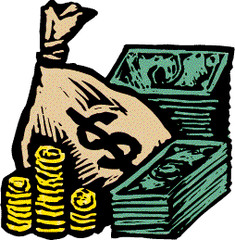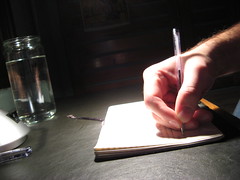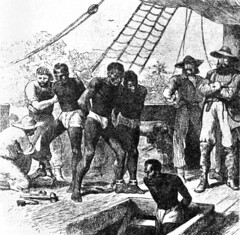| 9859918138 | psychology | the study of behavior and mental processes | | 0 |
| 9859918139 | psychology's biggest question | Which is more important in determining behavior, nature or nurture? | | 1 |
| 9859918140 | psychology's three levels of analysis | biopsychosocial approach
(looks at the biological, psychological, and social-cultural approaches together) | | 2 |
| 9859918141 | biological approach | genetics, close-relatives, body functions | | 3 |
| 9859918142 | evolutionary approach | species - helped with survival (ancestors) | | 4 |
| 9859918143 | psychodynamic approach | unconscious/subconscious, repressed feelings, unfulfilled wishes | | 5 |
| 9859918144 | behavioral approach | learning (classical and operant) observed | | 6 |
| 9859918145 | cognitive approach | thinking affects behavior | | 7 |
| 9859918146 | humanistic approach | becoming a better human (behavior, acceptance) | | 8 |
| 9859918147 | social-cultural approach | cultural, family, environment | | 9 |
| 9859918148 | two reasons of why experiments are important | hindsight bias + overconfidence | | 10 |
| 9859918149 | types of research methods | descriptive, correlational, and experimental | | 11 |
| 9859918150 | descriptive methods | case study
survey
naturalistic observation
(DON'T SHOW CAUSE/EFFECT) | | 12 |
| 9859918151 | case study | studies one person in depth
may not be typical of population | | 13 |
| 9859918152 | survey | studies lots of people
not in depth | | 14 |
| 9859918153 | naturalistic observation | observe + write facts without interference | | 15 |
| 9859918154 | correlational method | shows relation, but not cause/effect
scatterplots show research | | 16 |
| 9859918155 | correlation coefficient | + 1.0 (both increase)
0 (no correlation
- 1.0 (one increases, other decreases) | | 17 |
| 9859918156 | experimental method | does show cause and effect through the intentional manipulation of an independent variable | | 18 |
| 9859918157 | population | type of people who are going to be used in experiment | | 19 |
| 9859918158 | sample | actual population who will be studies (randomness reduces bias) | | 20 |
| 9859918159 | random assignment | chance selection of how participants will be studied (often the difference between a control group and an experimental group) | | 21 |
| 9859918162 | independent variable | the variable in the study that is changed/manipulated in the hopes of causing a hypothetical effect | | 22 |
| 9859918163 | dependent variable | the variable in the studied that is changed and measured as a result of the experiment | | 23 |
| 9859918164 | confounding variable | can affect dependent variable beyond experiment's control | | 24 |
| 9859918165 | scientific method | theory
hypothesis
operational definition
revision | | 25 |
| 9859918167 | hypothesis | measurable/specific claim of the believed relationship that exists between 2 variables | | 26 |
| 9859918168 | operational definition | specific explanation of the variables that are studied that is provided to enhance replicability | | 27 |
| 9859918169 | mode | appears the most | | 28 |
| 9859918170 | mean | average | | 29 |
| 9859918171 | median | middle | | 30 |
| 9859918172 | range | highest - lowest | | 31 |
| 9859918173 | standard deviation | how scores vary around the mean | | 32 |
| 9859918175 | bell curve | (natural curve) |  | 33 |
| 9859918177 | ethics of testing on humans | consent
debriefing
no unnecessary discomfort/pain
confidentiality
withdraw at any time | | 34 |
| 9859918178 | sensory neurons | travel from sensory receptors to brain | | 35 |
| 9859918179 | motor neurons | travel from brain to "motor" workings | | 36 |
| 9859918180 | interneurons | (in brain and spinal cord)
connecting motor and sensory neurons | | 37 |
| 9859918372 | neuron | |  | 38 |
| 9859918181 | dendrites | receive messages from other neurons | | 39 |
| 9859918182 | myelin sheath | protects the axon and regulates transmission speed | | 40 |
| 9859918183 | axon | where charges travel from cell body to axon terminal | | 41 |
| 9859918184 | neurotransmitters | chemical messengers | | 42 |
| 9859918185 | reuptake | extra neurotransmitters are taken back | | 43 |
| 9859918186 | excitatory charge | "Let's do it!" | | 44 |
| 9859918187 | inhibitory charge | "Let's not do it!" | | 45 |
| 9859918188 | central nervous system | brain and spinal cord | | 46 |
| 9859918189 | peripheral nervous system | somatic nervous system
autonomic nervous system | | 47 |
| 9859918190 | somatic nervous system | voluntary movements | | 48 |
| 9859918191 | autonomic nervous system | involuntary movements
(sympathetic and parasympathetic nervous systems) | | 49 |
| 9859918192 | sympathetic nervous system | arousing/energizing; "fight or flight" | | 50 |
| 9859918193 | parasympathetic nervous system | calming/relaxing; "rest and digest" | | 51 |
| 9859918194 | neural plasticity | more connections in neural networks form with greater use while others fall away if not used | | 52 |
| 9859918195 | spinal cord | expressway of information
bypasses brain when reflexes involved | | 53 |
| 9859918196 | endocrine system | slow
uses hormones in the blood system | | 54 |
| 9859918197 | master gland | pituitary gland | | 55 |
| 9859918199 | reticular formation (if stimulated) | sleeping subject wakes up | | 56 |
| 9859918200 | reticular formation (if damaged) | coma | | 57 |
| 9859918202 | thalamus | sensory switchboard
(does not process smell) | | 58 |
| 9859918203 | hypothalamus | basic behaviors (hunger, thirst, sex, blood chemistry) | | 59 |
| 9859918204 | cerebellum | implicit memory, judge time, balance emotions, coordinate movements | | 60 |
| 9859918205 | cerebellum (if damaged) | difficulty walking and coordinating | | 61 |
| 9859918206 | amygdala | aggression, fear, and memory associated with these emotions; triggers fight or flight response | | 62 |
| 9859918209 | hippocampus | process new memory; stores explicit memory | | 63 |
| 9859918213 | glial cells | provide nutrients to myelin sheath
marks intelligence
higher proportion of glial cells to neurons | | 64 |
| 9859918214 | frontal lobe | judgement, personality, processing
(Phineas Gage accident) | | 65 |
| 9859918215 | parietal lobe | math and spatial reasoning; also pain, pressure, and position of body in space | | 66 |
| 9859918216 | temporal lobe | audition and recognizing faces | | 67 |
| 9859918217 | occipital lobe | vision | | 68 |
| 9859918218 | corpus callosum | bridge in the brain that allows for cross-lateralization | | 69 |
| 9859918219 | Wernicke's area | in the temporal lobe, interprets auditory and hearing; COMPREHENSION of language | | 70 |
| 9859918220 | Broca's area | in the frontal lobe; PRODUCTION of language, like speaking words | | 71 |
| 9859918222 | sensation | what our senses tell us | | 72 |
| 9859918223 | bottom-up processing | senses to brain | | 73 |
| 9859918224 | perception | what our brain tells us to do with that information | | 74 |
| 9859918225 | top-down processing | brain to senses | | 75 |
| 9859918226 | inattentional blindness | fail to perceive sensory information because attention is elsewhere (think "invisible gorilla") | | 76 |
| 9859918227 | cocktail party effect | even with tons of stimuli, we are able to pick out our name, etc. | | 77 |
| 9859918230 | absolute threshold | minimum stimulation needed in order to notice the presence of a stimuli 50% of the time | | 78 |
| 9859918231 | signal detection theory | we notice what is more important to us when we are presented with multiple stimuli at one time | | 79 |
| 9859918232 | JND (just noticeable difference) | (Weber's law)
difference between different stimuli noticed in proportion | | 80 |
| 9859918233 | sensory adaptation | tired of noticing
(Brain says, "Been there, done that. Next?" | | 81 |
| 9859918234 | rods | processes better during night time, processing of black and white and peripheral vision | | 82 |
| 9859918235 | cones | processing of color and highly detailed vision | | 83 |
| 9859918236 | parallel processing | notice color, form, depth, movement, etc. | | 84 |
| 9859918237 | Young-Helmholtz trichromatic theory | 3 corresponding color receptors
(RGB) | | 85 |
| 9859918238 | Hering's opponent-process theory | after image in opposite colors
(RG, YB, WB) | | 86 |
| 9859918241 | place theory of hearing | we hear different pitches in different places in basilar membrane | | 87 |
| 9859918242 | frequency theory | auditory processing is based on the vibration caused by the impulse of the sound's frequency | | 88 |
| 9859918244 | Skin feels what? | warmth, cold, pressure, pain | | 89 |
| 9859918245 | gate-control theory | the spine acts a gate to the brain that can allow or block signals to pass through to be sensed, or not (often specifically applied to pain management) | | 90 |
| 9859918247 | smell | close to memory section, (not in thalamus), highly integrated with the sense of taste | | 91 |
| 9859918248 | Gestalt principles of perception | make sense of pieces
create a whole | | 92 |
| 9859918249 | Gestalt principles | proximity
similarity
continuity
connectedness
closure | | 93 |
| 9859918252 | consciousness | awareness of ourselves and the environment | | 94 |
| 9859918253 | circadian rhythm | daily biological clock and regular cycle
(sleep and awake) | | 95 |
| 9859918254 | circadian rhythm pattern | - activated by light
- light sensitive retinal proteins signal brains SCN (suprachiasmatic nucleus)
- pineal gland decreases melatonin | | 96 |
| 9859918255 | What messes with circadian rhythm? | artificial light | | 97 |
| 9859918256 | The whole sleep cycle lasts how long? | approx. 90 minutes | | 98 |
| 9859918257 | sleep stages | relaxed stage (alpha waves)
stage 1 (early sleep) (hallucinations)
stage 2 (sleep spindles - bursts of activity) (sleep talk)
stage 3 (transition phase) (delta waves)
stage 4 (delta waves) (sleepwalk/talk + wet the bed)
stage 5 (REM) (sensory-rich dreams) (paradoxical sleep) | | 99 |
| 9859918258 | purpose of sleep | 1. recuperation - repair neurons and allow unused neural connections to wither
2. making memories
3. body growth (children sleep more) | | 100 |
| 9859918259 | insomnia | can't sleep | | 101 |
| 9859918260 | narcolepsy | fall asleep anywhere at anytime | | 102 |
| 9859918261 | sleep apnea | stop breathing in sleep | | 103 |
| 9859918264 | dreaming (3) | 1. vivid bizarre intense sensory experiences
2. carry fear/survival issues - vestiges of ancestors' survival ideas
2. replay previous day's experiences/worries | | 104 |
| 9859918265 | purpose of dreaming (5 THEORIES) | 1. physiological function - develop/preserve neural pathways
2. Freud's wish-fulfillment (manifest/latent content)
3. activation synthesis - make sense of stimulation originating in brain
4. information processing
5. cognitive development - reflective of intelligence | | 105 |
| 9859918267 | depressants | slows neural pathways | | 106 |
| 9859918268 | alcohol | ((depressant))
disrupts memory formation (REM)
lowers inhibition
expectancy effect | | 107 |
| 9859918269 | barbituates (tranquilizers) | ((depressant))
reduce anxiety | | 108 |
| 9859918270 | opiates | ((depressant))
pleasure
reduce anxiety/pain | | 109 |
| 9859918271 | stimulants | hypes neural processing | | 110 |
| 9859918272 | methamphetamine | ((stimulant))
heightens energy
euphoria
affects dopamine | | 111 |
| 9859918273 | caffeine | ((stimulant)) | | 112 |
| 9859918274 | nicotine | ((stimulant))
CNS releases neurotransmitters
calm anxiety
reduce pain
affects (nor)epinephrine and dopamine | | 113 |
| 9859918275 | cocaine | ((stimulant))
euphoria
affects dopamine, serotonin, and norepinephrine | | 114 |
| 9859918276 | hallucinogen | excites neural activity | | 115 |
| 9859918277 | ecstasy | ((hallucinogen))
reuptake is blocked
affects dopamine and serotonin | | 116 |
| 9859918278 | LSD | ((hallucinogen))
affects sensory/emotional "trip" (+/-)
affects serotonin | | 117 |
| 9859918279 | marijuana | ((hallucinogen))
amplify sensory experience
disrupts memory formation | | 118 |
| 9859918280 | learning | organism changing behavior due to experience
(association of events) | | 119 |
| 9859918281 | types of learning | classical
operant
observational | | 120 |
| 9859918282 | famous classical psychologists | Pavlov and Watson | | 121 |
| 9859918283 | famous operant psychologist | Skinner | | 122 |
| 9859918284 | famous observational psychologists | Bandura | | 123 |
| 9859918285 | classical conditioning | outside stimulus | | 124 |
| 9859918286 | Pavlov's experiment | Step 1: UCS (food) -> UCR (salivation)
Step 2: PAIRING = NS (bell) -> UCS (food) -> UCR (salivation)
Later... CS (bell) -> CR (salivation) | | 125 |
| 9859918287 | Watson's experiment | white rat was given to Little Albert
Step 1: UCS (noise) -> UCR (cry)
Step 2: PAIRING = NS (rat) -> UCS (noise) -> UCR (cry)
Later... CS (rat) -> CR (cry) | | 126 |
| 9859918288 | generalization | any small, white fluffy creature will make Albert cry now | | 127 |
| 9859918289 | discriminate | any large, white fluffy creature won't make Albert cry | | 128 |
| 9859918290 | extinction | stop "treating" with conditioned response | | 129 |
| 9859918291 | spontaneous recovery | bring stimulus back after a while | | 130 |
| 9859918292 | operant conditioning | control by organism | | 131 |
| 9859918293 | Skinner's experiment | operant chamber / Skinner box
(lead to shaping) | | 132 |
| 9859918294 | shaping | get animal closer to doing what you want them to do | | 133 |
| 9859918295 | reinforcers | want to continue behavior
(positive reinforcement: give money to do laundry)
(negative reinforcement: do to avoid nagging) | | 134 |
| 9859918296 | punishments | want to stop behavior
(positive reinforcement: smack)
(negative reinforcement: take away phone) | | 135 |
| 9859918297 | fixed ratio | happens a certain number of times
(Starbucks punch card) | | 136 |
| 9859918298 | variable ratio | happens an unpredictable number of times
(winning the lottery) | | 137 |
| 9859918299 | organism must do these (2 times) | fixed ratio and variable ratio | | 138 |
| 9859918300 | fixed interval | happens at a certain time
(mailman comes to the house at 10:00 AM) | | 139 |
| 9859918301 | variable interval | happens at any time
(receive texts from friends) | | 140 |
| 9859918302 | these things happen regardless (2 times) | fixed interval and variable interval | | 141 |
| 9859918303 | Which (fixed/variable) conditions better? | variable | | 142 |
| 9859918304 | criticisms of Skinner | doesn't take into account intrinsic motivation | | 143 |
| 9859918305 | intrinsic motivation | doing something for yourself, not the reward | | 144 |
| 9859918306 | extrinsic motivation | doing something for reward | | 145 |
| 9859918308 | famous observational experiment | Bandura's Bobo doll | | 146 |
| 9859918309 | famous observational psychologist | Bandura | | 147 |
| 9859918310 | mirror neurons | "feel" what is observed
happens in higher order animals | | 148 |
| 9859918311 | Bobo doll experiment legacy | violent video games/movies desensitize us
see good: do good
see evil: do evil | | 149 |
| 9859918312 | observational learning | attention, motivation, retention, and reproduction | | 150 |
| 9859918313 | habituation | get used to it -> stop reacting | | 151 |
| 9859918315 | serotonin involved with memory | speeds the connection between neurons | | 152 |
| 9859918316 | Long term potentiation | strengthens potential neural forming (associated with speed) | | 153 |
| 9859918320 | flashbulb memory | type of memory remembered because it was an important/quick moment | | 154 |
| 9859918324 | memory | learning over time
contains information that can be retrieved | | 155 |
| 9859918325 | Information Processing Model | encoding -> storage -> retrieval | | 156 |
| 9859918326 | encoding | information going in; iconic, echoic, and semantic | | 157 |
| 9859918327 | storage | keeping information in, REHEARSAL, working memory model | | 158 |
| 9859918328 | retrieval | taking information out through recall or recognition | | 159 |
| 9859918329 | How long is sensory memory stored? | seconds | | 160 |
| 9859918330 | How long is short-term memory stored? | less than a minute | | 161 |
| 9859918331 | How many bits of information is stored in short-term memory? | 7 +/- 2 | | 162 |
| 9859918334 | short term memory goes to ______________ | working memory | | 163 |
| 9859918335 | working memory | make a connection and process information to mean something, (central executive, visiospatial sketchpad, phonological loop, episodic buffer) | | 164 |
| 9859918336 | working memory goes to _________________ | long-term memory | | 165 |
| 9859918337 | How much is stored in long-term memory? | LIMITLESS | | 166 |
| 9859918338 | implicit memory | naturally do | | 167 |
| 9859918339 | explicit memory | need to explain | | 168 |
| 9859918340 | automatic processing | space, time, frequency, well-learned information | | 169 |
| 9859918341 | effortful processing | processing that requires attention and effort | | 170 |
| 9859918342 | spacing effect | spread out learning over time is stored and retrieved best | | 171 |
| 9859918343 | serial position effect | primary/recency effect; information is remembered in the order in which it is presented | | 172 |
| 9859918344 | primary effect | remember the first things in a list | | 173 |
| 9859918345 | recency effect | remember the last things in a list | | 174 |
| 9859918347 | semantic encoding
(1) meaning (2) how to | make meaning out of something
---
chunk, hierarchy, or connect to you | | 175 |
| 9859918348 | if we can't remember a memory... | 1. change memory to suit us
2. fill in the blanks with logical story | | 176 |
| 9859918349 | misinformation effect | not correct information | | 177 |
| 9859918352 | priming | association (setting you up) | | 178 |
| 9859918353 | context | environment helps with memory | | 179 |
| 9859918354 | state-dependency | you may remember something if you go back to the state you were in
(go back to high) | | 180 |
| 9859918355 | mood-congruency | emotion will bring back similar emotional memories | | 181 |
| 9859918356 | Ebbinghaus' forgetting curve | we forget a lot of information very quickly, but what is retained is permanently in long term memory | | 182 |
| 9859918358 | proactive interference | old information interferes with the new | | 183 |
| 9859918359 | retroactive interference | new information interferes with the old | | 184 |
| 9859918361 | Loftus | developed theory of misinformation effect | | 185 |
| 9859918363 | problem-solving strategies | trial + error
algorithms
heuristic (analogies, means-end analysis)
insight - "AHA!" | | 186 |
| 9859918364 | barriers to problem-solving | functional fixedness, mental set | | 187 |
| 9859918365 | mental set | what has worked in the past | | 188 |
| 9859918366 | functional fixedness | only way to do this is with this | | 189 |
| 9859918367 | Chomsky (nature or nurture?) | "born with language" (nature) | | 190 |
| 9859918368 | Skinner (nature or nurture?) | language is learned (nurture) | | 191 |
| 9859918369 | grammar is _________ | universal | | 192 |
| 9859918370 | phonemes | smallest sound unit | | 193 |
| 9859918371 | morphemes | smallest meaning unit | | 194 |
| 9860403945 | decision-making strategies | representative and availability heuristics | | 195 |
| 9860432755 | Assimilation | Focus on similarities between new information and schematic knowledge (a zebra is a horse) | | 196 |
| 9860439660 | Accomodation | Focus on differences between new information and schematic knowledge, need to change schema (a giraffe is not a horse) | | 197 |
| 9860459002 | Piaget's "markers" of cognitive development | Sensori-motor - develop object permanence
Preoperational - develop conservation
Concrete operational - develop logical thinking
Formal operational - develop abstract thinking | | 198 |
| 9860489889 | Maslow's hierarchy of needs | Physiological, Safety, Belonging, Esteem, Self-actualization | | 199 |









































































































































